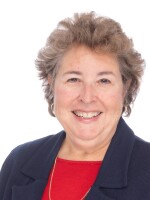If you don’t have plans for lunch on Friday, consider joining Andrea Weeks, a professor of plant biology who helps track the arrival and spread of non-native species in Virginia.
“More than 30% of the species that you see in front of you can be non-native plants, and every year we are recording new species that have become naturally established in our environment.

Those newcomers need to be removed or at least managed to prevent damage to native plants that feed local wildlife. Take trees for example. You’ll see them along many highways, covered in kudzu – a plant imported from Japan.
“Kudzu, like oriental bittersweet, grows profusely and can create weight-stress on native trees so that when there’s an ice or wind storm, there is more of a physical burden on the trees that are holding these vines up, and it can lead to tree blow down.”
Invasive vines can also suck up water and nutrients from the soil and deprive native plants of sunlight.
“They can create a very dense canopy. They can also squeeze the plant, a little bit like a python, cutting off the flow of water underneath that bark.”
During her free lunchtime presentation, Weeks will explain how anyone can become a citizen scientist, helping to identify and track the invaders.
“The point is to monitor our flora so that we can manage it most effectively and keep it in as good of a shape as we can for the future.”
While the list of invasive, non-native species is long, it does not include one infamous plant – poison ivy.
“It has fruits that are very nutritious and are really wonderful food for songbirds preparing for their migration.”
And that reduces your risk, should you join the ranks of people who want to help build the Digital Atlas. Weeks explains that participants should be prepared to clip and send a sample when they report finding non-native plants.
“So that we can be 100% certain that the species is, indeed, what it is reported to be, and we also have a physical voucher that becomes part of a natural history collection and is kept in perpetuity.”
It’s a big job that Weeks says will go on indefinitely, but she’s encouraged by growing public awareness, with more than a hundred people already signed up for Friday’s program online.
For more information go to https://blueridgeprism.org/events

